| 2.35:1 | 1.85:1 | |
| what he sees | 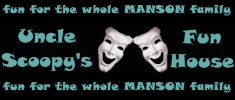 |
 |
| special lenses make the film negative look like this. No information is lost, but the images are compressed into 35mm size (1.37-1) |
|
|
| what is projected | 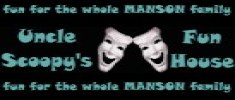 |
 |
Widescreen vs Full Screen
This question is far more complex that you think. Widescreen versions are, in theory, the same as the theatrical version, so it is necessary to discuss first how theatrical versions are created. There are four typical methods in use today.
When the film is projected, it is uncompressed by the opposite lenses, and voila!, you see what he saw.
| 2.35:1 | 1.85:1 | |
| what he sees |  |
 |
| special lenses make the film negative look like this. No information is lost, but the images are compressed into 35mm size (1.37-1) |
|
|
| what is projected |  |
 |
Evaluation: very high tech, also very expensive and compressing/decompressing causes a very slight loss of clarity. Many good films have been made this way - Star Wars, and The Good the Bad and the Ugly, to name two. Allows very little flexibility to make a TV/video version, especially with 2.35 films.
| 2.35:1 | 1.85:1 | |
| what he sees. He knows that he's only composing for the area outlined in yellow, but he has to be aware that the rest of the image may be useful for creating a TV version later on. |  |
 |
| the film negative looks like this. |  |
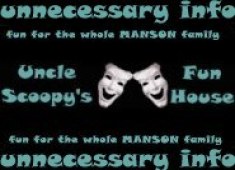 |
| what is projected (enlarged to fit the screen, of
course) BUT - in many versions, the projectionist could mess up and show the unnecessary info! |
 |
 |
Drawbacks - no significant ones except that one must rely on the projectionist! It is easy to make a sloppy TV version from this method, which I'll explain later.
Super 35 soft matte. The size of the frame in super-35 sound film has a ratio of about 1.6 to 1. Therefore, shooting a film in super 35 follows all the same proportions as shown above except with far less unnecessary info on the top and bottom. If you were to shoot a 1.85:1 film on super 35, you would be using almost the entire frame. As seen below, there is not that much room for unnecessary info.
Drawbacks: one significant one - super 35 film can't be projected in theaters. They have to create a separate theatrical print, usually by digitizing the images, usually using an anamorphic print.
So how do these varying methods affect the TV version. We'll forget 16x9 and HDTV and all that for now and just work on 4:3, which has been the standard TV size in North America, and is the size of "fullscreen" prints.
In the case of anamorphic - one cannot make a TV version from the negative. One must convert the negative to a digitized print, then create a TV version from that. Since an anamorphic print includes no spare information on the top of bottom, the TV version will most likely be the same height, with information cropped from both sides. Most TV versions are panned and scanned, or to be more accurate, panned and scanned and zoomed - in other words, each camera set-up is cropped to get a usable 4:3 version. Imagine how hard that is to create a 1.33 version from a 2.35 version, with no additional material on the top or bottom. If there is no "unnecessary info" on the negative, the only way to prepare a 1.33 version is to chop off a minimum of 80% of the picture. A great director like George Lucas is not likely to simply chop off 40% of the image on each side! He has to prepare a 4:3 version set-up by set-up, choosing carefully from the existing information exactly which 4:3 rectangle will give him the best image, possibly only choosing something small and zooming it. The TV versions might look like this
| 2.35:1 | 1.85:1 | |
| what is projected |  |
 |
| TV version (pan & scan, no zoom) |  |
 |
| alternate TV version (zoom) |  |
 |
You don't think you can lose that much info? Check this out.
| 2.35:1 | |
| what is projected | 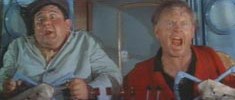 |
| TV version (pan & scan, no zoom) | 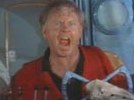 |
In the case of an anamorphic print, the information in the TV version cannot be greater than the theatrical version in any direction. It MUST crop on the side or sides. It may also zoom in and lose info on the top or bottom. Making a 4:3 version from a 2.35 film is a next-to-impossible task. That is one good reason why Star Wars has been such a problem for home video.
In the case of hard matte - one can make a TV version from the negative, but in all other respects, it presents the exact same situation as anamorphic. There is no information to spare. The director created exactly what he wanted on the negative, and you can only make it smaller to cobble it into a 4:3 version. Therefore, all the anamorphic tables above also apply here.
In the case of soft matte - now we are getting into some interesting possibilities. It is possible for the TV version to include lots and lots of information not in the theatrical version. How can this be?
There are two common ways to make a TV version from a soft matte film, and one of them, the simplest, is simply to use the entire negative. It just so happens that 35 mm film has a 1.37:1 aspect ratio, and TV's are 1.33:1. Nobody cares about the slight difference. This technique is called "open matte", which means the whole negative becomes the new TV version. The more complicated version is to use pan&scan&zoom to create a new version from the negative. Pan & Scan may or may not also result in information not in the theatrical version, because whoever does the 4:3 version has additional info on the top and bottom of the screen, and might use it if is considered appropriate to get the best 4:3 images from a scene. Here are some examples with 2.35 to 1
| 2.35:1 | |
| the film negative looks like this. |  |
| what is projected (enlarged to fit the screen, of course) |  |
| open matte TV version - note how much extra info is available to us - possibly including nudity. |  |
| pan & scan TV version- one possibility NOT using unnecessary info | 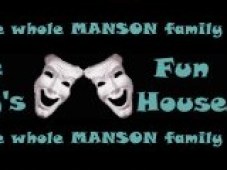 |
| pan & scan TV version - another possibility USING unnecessary info (many others are possible, of course) |  |
As you can see, it is easiest simply to use the full neg, but this always results in tons of unnecessary info, sometimes even showing props and boom mikes, often showing footage we are not supposed to see. Even pan & scan can result in some unnecessary info because there is always more on the top and bottom for the editor to use - especially in 2.35 films. The most famous example I can think of is in National Lampoon's Vacation, in which the video/TV version shows Beverly D'Angelo showering in her panties. In the case of soft matte films, a TV version should not theoretically have additional information on the sides, but may include more on the top and/or bottom. An open matte version will be just as wide as the widescreen, but with more on top and bottom. A pan & scan version may or may not be as wide as the widescreen, and it may vary scene by scene. The great directors meticulously supervise the creation of a 4:3 transfer.
Special case for super 35 - TV versions of these films may have additional info on the top and bottom, but an completely "open matte" version is not possible, because super-35 film has a 1.6-1 visual ratio, and that must be cropped to get it to TV size. Because super-35 is closer than 35mm to theatrical ratios, there is not much unnecessary info to work with, especially in a 1.85 film, but even a couple of inches of panties can spoil an illusion!
shot for video. Obviously, there is no problem creating TV versions of items created for TV. Either (1) the photographer makes it on film and composes the image knowing it will appear in an open matte version only, or (2) they shoot and edit the thing on video to begin with, just like you do with your home editing on your PC.
It is very rare for a straight-to-vid to have a widescreen version, although it is possible if it was shot on film and they were originally hoping for a theatrical distribution that never materialized..
letterboxed. Obviously, there is no problem creating TV versions of items in letterbox format, either. In theory, they take the original negative of a soft matte film, and simply black out the correct amount of info on the top and bottom to get the exact duplication of the director's intended theatrical version. With a hard matte film, the negative is already letterboxed! With an anamorphic film, there should not be a letterboxed version, but there could be if the director wanted to compose using only a portion of the full frame, with an eye to creating a more usable 4:3 version in the future. (Remember what I said earlier about the problems with converting a 2.35 anamorphic film to a 1.33 video version -almost always resulting in disastrous chopping.)
NOTE: when the full screen version shows additional information on the sides that cannot be seen in the widescreen version, that is a major red flag, and it is likely that the widescreen version was created in some inartistic shortcut way, not from the negative or an original theatrical print.
In such a case, the widescreen version does not reflect the theatrical version, even if it happens to have the same aspect ratio. In that circumstance, the widescreen DVD may have a congruent rectangle to what was seen in the theaters, but a far smaller version of the same shape.